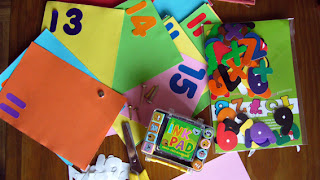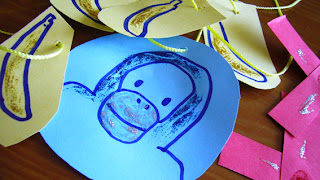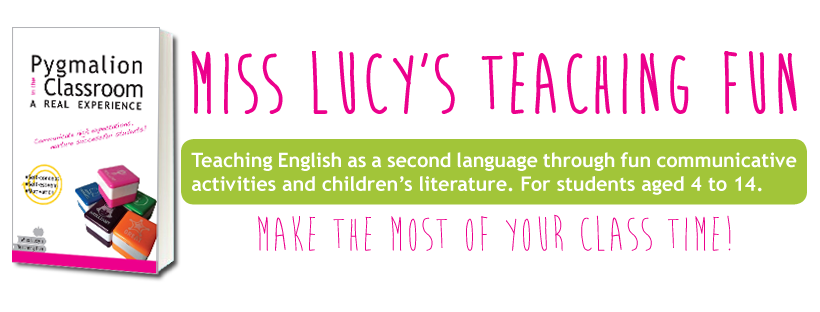It has been a hot July here in Madrid this year, but I was able to enjoy every single day of it thanks to the shadowy garden where I was teaching English to 4 adorable nearly - 4-year- old children.
 |
| numbers and stamps |
2 boys and 2 girls.
The old women around us were surprised by their good manners and the attention they were paying me.
As I've already told you, it was a great experience!
First of all because I only had 4 students: thanks to that it' was much easier to do anything I wanted, from playing active games to fingerpainting, with calm, positive attitude and a smile constantly stuck on my face.
Being affectionate is definitely a fundamental aspect, if your aim is to convince a young Spanish child that he or she is going to put up with you, speaking a foreign language, for 2 and a half hours from Monday to Friday, for 4 weeks!
 |
| glittery bees and flowers shining in the sun |
The second important point about teaching only 4 children is that you can really make anyone happy, presenting activities that will suit each member of the group.
That's also really important if you don't want to frustrate them in their attempt to learn English according to their aptitudes!
Last year I had a bad experience with a Summer Camp. Small children where forced to learn by heart some English sketches just to show off, to their parents, that they had learnt something.
But it was a real torture! For them, because repeating several times the same unpleasant things at those ages is everything but fun, and for their teachers, who had to put up with their intolerance towards the routine…
So this year, since I didn't have a boss to please, I fiercely tried to avoid all of that.
It has meant a little bit more of work and time spent thinking about a larger variety of games and activities, but I can tell you that parents were equally satisfied, because they found their offspring singing, saying words and expressing themselves in English, at home, more than usual.
And I firmly think that this is really all we can ask those little heroes.
Finally, I can say I've learnt every week a little more about what children like.
Here's my list:
 |
| the glittery hungry gorilla |
1) Glitter!!! : Put some glitter glue on anything you want them to pay attention to and they will take part in any game you'll introduce.
5) Fingerpainting: Painting with their fingers allows them to have a better control on lines and edges.
They're always required to paint inside the edged area and this technique gives them great satisfaction!
3) Plasticine: They can't make much more than snakes, snails and balls by themselves, but you'll gain their admiration forever if you can organize their beloved giraffe's birthday party or a green grocer's store with it.
 |
| fruit and vegetables made of plasticine |
4) Stamps and stencils! They love them because, since they can't really draw anything artistically valuable, they help them to produce nice pictures without struggling too much with crayons.
5) Gifts: Give them their works to take them home. They will decorate their room with them and consequently they'll be surrounded by English stuff, for at least 2 weeks. Having constant references around it's the best way to make sure that they will never forget what they've learnt.
 Allí escribiré, en español, sobre cómo los niños aprenden inglés y lo que hace falta para ayudarles.
Allí escribiré, en español, sobre cómo los niños aprenden inglés y lo que hace falta para ayudarles. Allí escribiré, en español, sobre cómo los niños aprenden inglés y lo que hace falta para ayudarles.
Allí escribiré, en español, sobre cómo los niños aprenden inglés y lo que hace falta para ayudarles.


+19:51.jpg)
